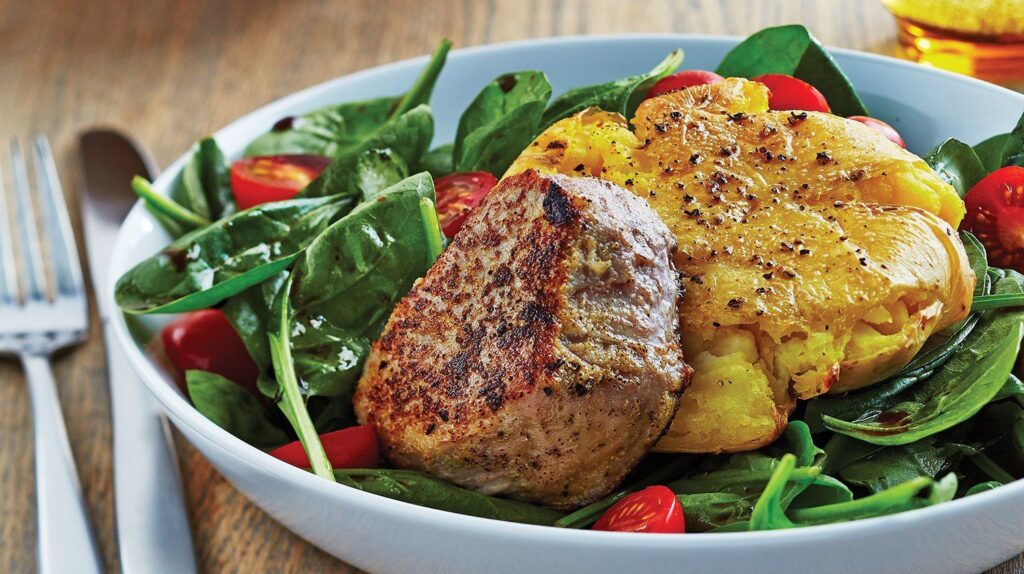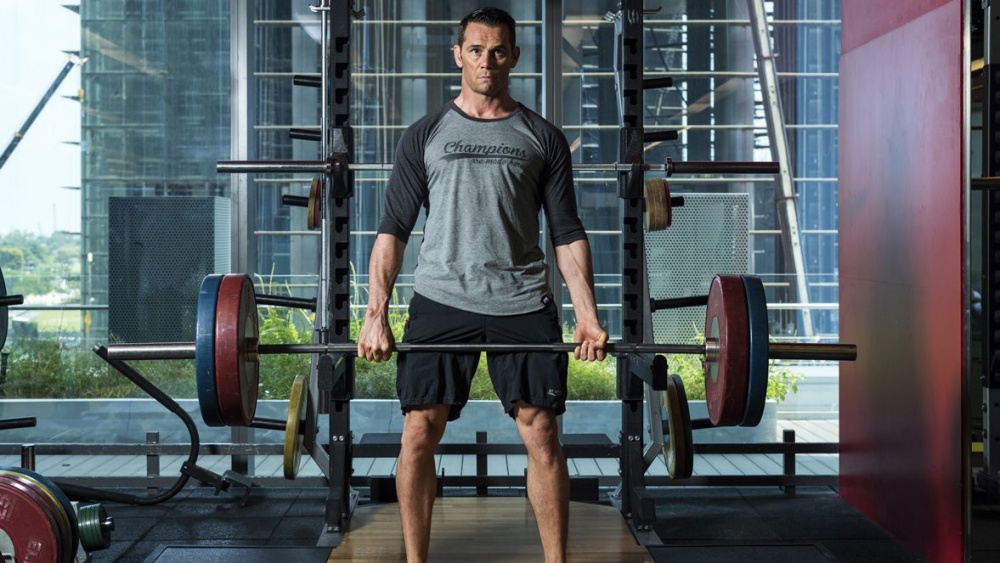Guest post by Evolve MMA, Asia’s premier championship brand for martial arts. It has the most number of World Champions on the planet. Named as the #1 ranked martial arts organization in Asia by CNN, Yahoo! Sports, FOX Sports, Evolve MMA is the top rated BJJ gym in Singapore.
If you’re one of the many people looking to build muscle and bulk up, you’ve come to the right place. Most fitness articles focus on losing weight and getting rid of excess fat since most people are overweight. People trying to do the opposite often have to dedicate lots of time to find the information they need for their fitness journey.
This article will serve as a comprehensive guide for anyone looking to gain weight. We’ll go over all the essential things you need to do to force your body to build bigger muscles and grow.
How To Bulk Up And Gain Muscle Mass
Let’s start our bulking guide by going over the three body types people fall under:
- Ectomorphs: Ectomorphs are naturally skinny people. Many of these people spend most of their lives underweight. Ectomorphs have the most challenging time building bigger muscles due to their extremely high metabolism.
- Endomorph: Endomorphs are the opposite of ectomorphs. These people are typically overweight most of their lives since their body puts on weight quickly due to their slow metabolism. Endomorphs have the most challenging time losing weight, but they can bulk up easily.
- Mesomorph: Mesomorphs are in-between ectomorphs and endomorphs. They are typically the most athletic people, and they gain or lose weight easily.
Understanding which one of these categories you fall under is the first step towards bulking and adding muscle to your frame. Your workout and diet will revolve around the body type you have. For example, ectomorphs must commit to eating more than they ever have when bulking to force their bodies to build larger muscles.
However, they would generally get away with eating junk foods more in their bulking face since their body naturally struggles to put excess fat on their frame. Endomorphs must be extremely strict with their diets when bulking to keep their fat gain to a minimum.
The formula everyone has to follow, regardless of body type, when bulking is ensuring they consume more calories than their bodies need daily. The caloric surplus goes into building bigger muscles.
1) Figuring Out Your Daily Calorie Intake
The first part of your bulking journey should be figuring out your daily calorie needs. Use one of the countless online calculators or apps to figure that out. These calculators often use factors like your daily activity level, height, sex, and age to estimate your daily calorie needs.
Input all your info into a calculator, and you’ll get a number. You ideally want to consume 10 to 20 percent more than your daily calorie needs to gain about 0.5 percent of your body weight in muscle per week.
For example, if you need 3,000 calories daily to maintain your current weight, you should aim for 3,300 to 3,600 per day. This is enough for you to gain a pound of muscle per week if you weigh around 160 pounds.
People new to bulking and ectomorphs should aim for the higher end of the daily calorie range. Endomorphs and people with more experience bulking should aim for the lower end to minimize the fat increase in their bodies.
2) Planning Your Diet
Once you’ve determined how many calories you need to consume daily to bulk up, it’s time to determine the proper ratios for your macros. Your macros are the primary nutrients that make up the bulk of your diet: carbohydrates, proteins, and fats. Carbs and proteins contain about four calories per gram, while fat contains about nine calories per gram.
When bulking, your diet should be:
- 45 to 60 percent carbohydrates
- 30 to 35 percent of proteins
- 15 to 30 percent fat
This macro ratio optimizes your muscle growth. Use a calorie tracker to keep up with all your meals and adjust as needed.
The types of food you should look to add to your diet when bulking include:
- Fruits like bananas, avocado, kiwi, pears, oranges, pineapple, berries, and apples
- Vegetables like broccoli, beets, carrots, asparagus, kale, cucumber, peppers, and mushrooms
- Starchy vegetables like yams, potatoes, rutabaga, jicama, and arrowroot
- Grains like rice, quinoa, popcorn, oatmeal, corn, cereal, and bread
- Seafood like tuna, tilapia, shrimp, salmon, lobster, crab, and cod
- Dairy products like yogurt, milk, cheese, cottage cheese, and butter
- Meats like pork, chicken, beef, and poultry products like eggs
- Legumes like lentils, pinto beans, and black beans
- Seeds and nuts like walnuts, sunflower seeds, chai seeds, and almonds
- Unsweetened beverages like coffee, diet drinks, tea, and water
- Sweetened drinks like soda, tea, or coffee can be consumed in moderation
Some of the foods to avoid when bulking include:
- Alcohol: Alcohol restricts your body’s ability to build muscle, especially when taken excessively. Keep alcohol consumption to a minimum or avoid it altogether when bulking.
- Processed foods with added sugars: These foods come with many health risks like diabetes, and they increase your unwanted fat gain.
- Fried food: These foods increase your risk of heart disease, and they contain unhealthy fats.
The two main things you should keep in mind when creating your bulking diet are to make sure you consume more calories than your body needs daily and eat at least two grams of protein for each kilogram you weigh. These are the two things your body needs the most to grow bigger muscles. All your hard work in the gym won’t mean much if you aren’t doing these things. Make sure you’re drinking close to a gallon of water per day.
3) Creating Your Workout Plan
You’ll need to consistently stimulate your muscles to get them to grow. There are many ways to do this, like calisthenics and exercise machines, but free weights are the most effective approach. Calisthenics and machines can give your muscles enough stimulation to grow, but they have some severe limitations.
Machines stabilize the weights you work out with for you, so your stabilizer muscles don’t do any work. Calisthenics exercises don’t have this problem, but your body quickly adjusts to them, so you progressively get less from your workouts. You can use variations to make bodyweight exercises more challenging, but you probably still be able to get more reps than your body needs for optimal growth.
You see, the sweet spot for building bigger muscles is performing exercises you can only do for four to eight reps before fatigue stops you. You want to do about three to five sets of this for each muscle group.
Free weights force you to do all the work, putting your stabilizer muscles into play. Free weights are also easy to load, so you can always find the sweet spot where you can only perform four to eight reps. For example, you might only be able to do five push-ups when you start working out, but you’ll be able to do more than ten in a few weeks if you keep working out.
At that point, you’re no longer getting the best workout for muscle growth. However, with free weights, you can simply add more plates to the bar, so you can’t get more than eight reps.
Making Compound Exercises The Foundation
A compound exercise works multiple muscle groups, including some of your largest muscles. These exercises should be the foundation of your bulking workout. They make your workouts more efficient and have been proven to be the most effective way to build muscle mass. Deadlifts are the top exercise for building mass since they work almost all the muscles in your body.
Other compound exercises that should be part of your workout routine include:
- Squats
- Bench press
- Leg press
- Pull-ups (if you can’t get more than eight) and weighted pull-ups
- Barbell rows
Each of your workouts should contain at least one of these exercises. You can then add other exercises that isolate specific muscle groups you want to work on, like shrugs, bicep curls, calve raises, and leg extensions.
Your Routine
The key to getting the most out of your workouts is training consistently. Contrary to popular belief, you only have to hit each muscle group weekly to see significant muscle growth. Anything more than that is just extra.
Figure out the exercises you want to add to your workout and draft a plan that gives you time to recover after each workout and targets each muscle at least once a week. Schedule exercises that isolate specific muscle groups on the same day you perform compound exercises that target them. For example, aim to perform bicep curls on the same day you do pull-ups.
Sample Workout Routine
Let’s take a look at a simple bulking workout that targets each muscle group once a week. Each workout should take you 30 minutes to an hour. We’ll use a three-day-a-week template for our workout. Here’s what it looks like:
Monday (Chest, Shoulders, And Triceps)
Warm up by performing dynamic stretches and running or cycling for five minutes.
- Bench press (four to eight reps, three sets)
- Chest fly (four to eight reps, three sets)
- Shoulder press (four to eight reps, three sets)
- Triceps pull-downs (eight to twelve reps, three sets)
- Russian twists (three sets of as many reps as you can get)
Wednesday (Leg Day)
Warm up by performing dynamic stretches, crunches, and leg raises.
- Deadlifts (four to eight reps, three sets)
- Squats (Four to eight reps, three sets)
- Leg extensions (four to ten reps, three sets)
- Hamstring curls (four to ten reps, three sets)
- Machine calve raises (fifteen to twenty reps, three sets)
Friday (Back And Biceps)
We’ve saved your easiest day at the gym for Fridays. Start by warming up with any light exercises that get your blood flowing and perform some dynamic stretches.
- Pull-ups (four to eight reps, three sets). Add weights if you can do more than eight pull-ups.
- Barbell rows (four to eight reps, three sets)
- Bicep curls (four to twelve reps, three sets)
That’s all it takes to build muscle. You don’t have to spend all day in the gym to grow; you just need to be consistent with your training and lift heavy. Add more weights whenever you get more than eight reps of these exercises. Lifting heavy is what sends the signal to your body to build bigger, stronger muscles to make your next lifting session easier. You should be increasing the weight you work out with every one to two weeks for most of these exercises. That’s one of the signs that lets you know your body is growing.
We should also stress the importance of getting nutrients into your body as soon as possible after your workouts. Waiting until you get home and make a meal won’t get you the best results. You want to replenish your body with nutrients as soon as you’re done working out. That’s where protein shakes come in. These products give you access to quick meals that don’t require much preparation.
Nowadays, protein shakes taste a lot better than they once did. Many taste rather pleasant. Look for one that contains 30 to 50 grams of protein and slam it immediately after your workout. That way, your body already has what it needs to recover as you leave the gym.
Supplements
When bulking, protein shakes, protein bars, and mass gainers are the main supplements you should consider. Protein shakes are excellent sources of protein, and they allow you to keep your body supplied with what it needs to repair muscle tissues damaged during your workouts and make them bigger.
Mass gainers are like protein shakes, but they contain a lot more carbs. Some mass gainers contain as many as 1000 calories, making them an asset to ectomorphs who struggle to gain weight. Getting all your macros from real food is always best, but mass gainers allow you to reach a caloric surplus when you’re struggling to consume all your macros or don’t have enough time to make enough meals.
Other supplements you should consider include:
- Multivitamins: Your body’s ability to build muscle is hindered by vitamin deficiencies.
- Creatine: This is a naturally occurring supplement that has been proven to increase muscle mass.
- Pre-Workout Drinks: Pre-workouts typically contain active ingredients like caffeine to give you a boost during your workouts.
Learn From Jordan Sullivan As “The Fight Dietician” To Stars Like Craig Jones Teaches You A Complete Course On How To Use Nutrition To Get The Most Out Of Your BJJ Performance.
- This course will teach you how to structure your diet for better performance on the mats, including a breakdown of concepts like how to approach your macros – carbs, proteins, and fats.
- See how you can supplement your diet and use Jordan’s lessons on calories, energy availability, and macronutrients for maximum energy and power while you train and compete.
The post Everything You Need to Know About Bulking And Gains for Jiu-Jitsu appeared first on Bjj Eastern Europe.





